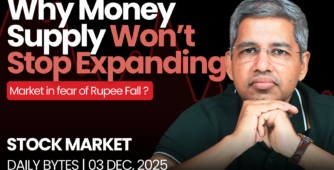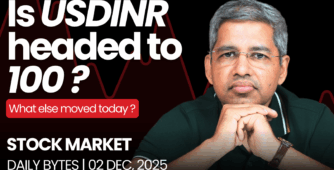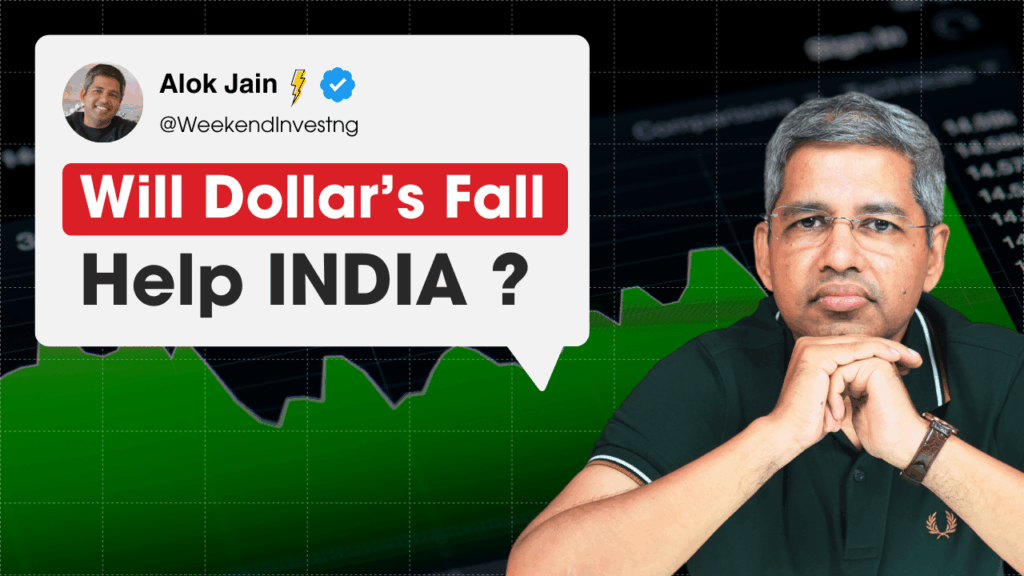
A good start to the month saw us bounce very strongly in the morning session, although we gave back most of those gains later in the day. Lingering concerns remain about external trade. Donald Trump came out today with a strong statement that any country buying from Iran will face sanctions. This is significant because India and China both buy oil from Iran.
The news from the White House continues to be conflicting. On one hand, there are reports that the USA and China may begin trade talks, which is positive. But then we have this warning on Iran, which adds to global uncertainty. A positive highlight today was the good GST collections, and foreign fund flows continue to come in. There was also news that for the first time in a very long time, the holding of Indian equities by domestic institutions has exceeded that of foreign investors, which is a great sign.
Slowly but steadily, confidence is returning to the market. The numbers are reasonably supporting the positive narrative. Today’s main topic is: Will the dollar’s fall help India? We will explore the history, India’s past performance in similar conditions, and how the current scenario may impact us.
Where is the market headed?
Market Overview
Nifty ended absolutely flat. It tried to cross 24,500 but was resisted. Over the past few days, we’ve seen support at the highs of the previous two peaks, which is a good technical sign. The message here is to wait and consolidate for some more time, which is perfectly fine.
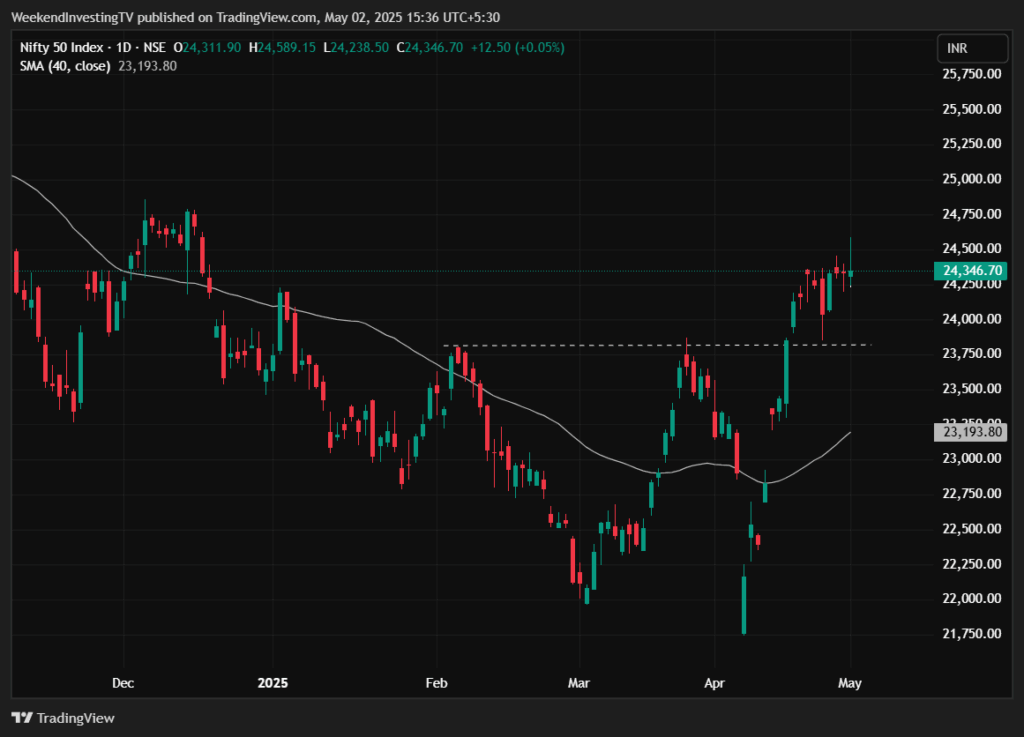
Nifty Next 50
Nifty Junior also ended flat at -0.12%
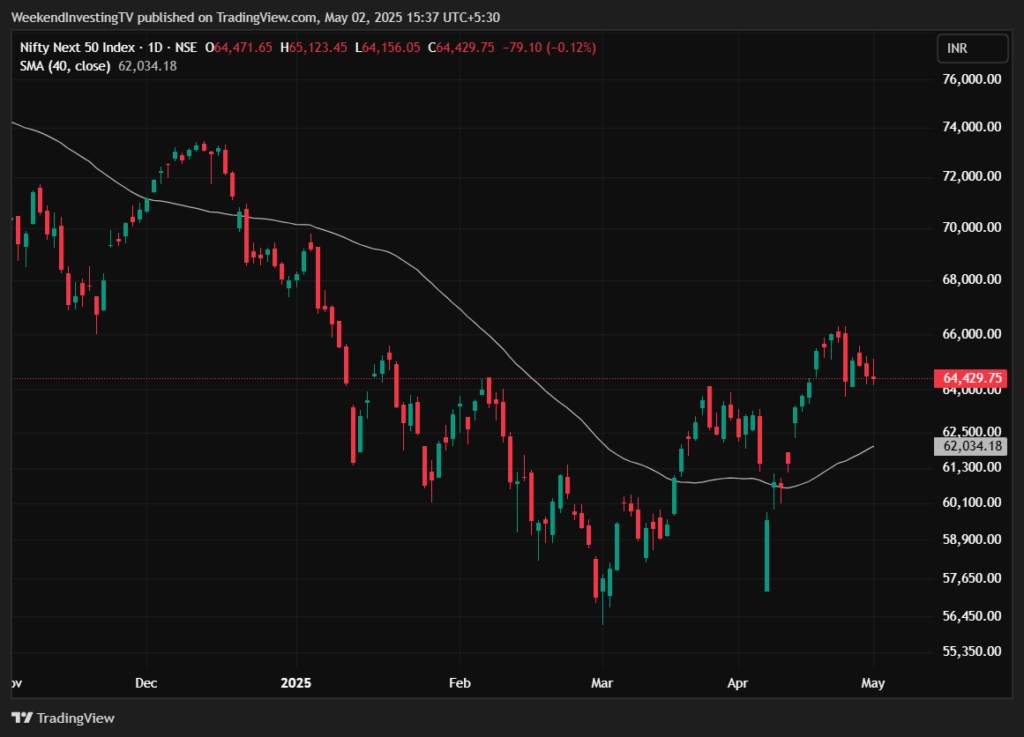
Nifty Mid and Small Cap
Mid-cap index slightly down at -0.68%, and small caps nearly unchanged at -0.03%. The market remains in a wait-and-watch mode.FII and domestic flows continue to support the market.
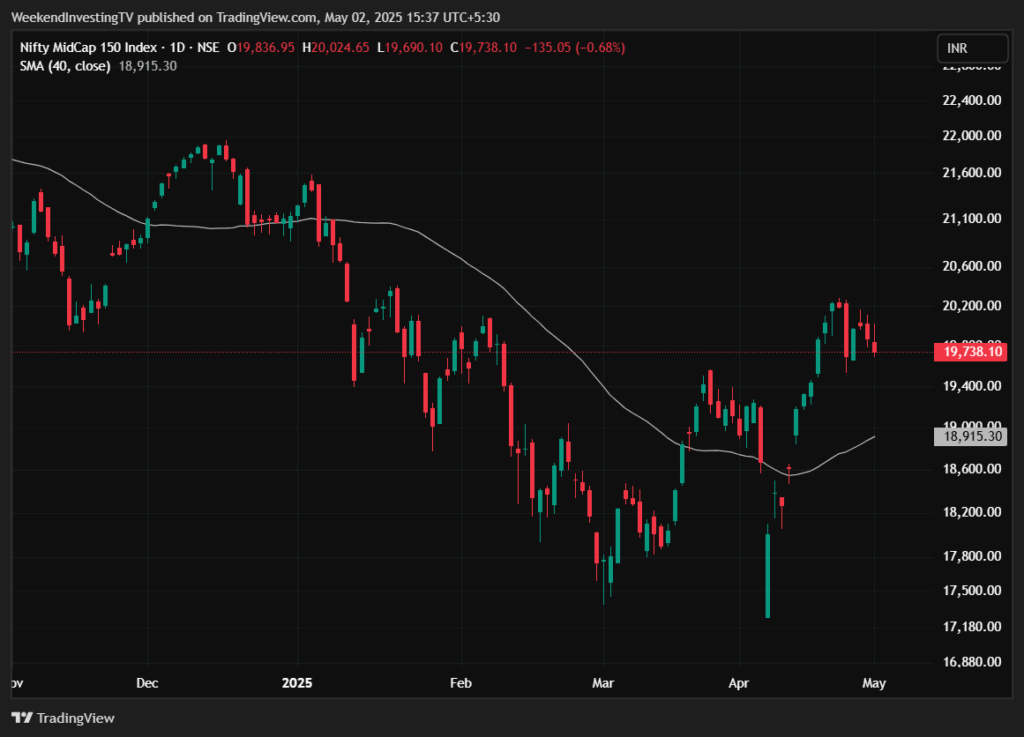
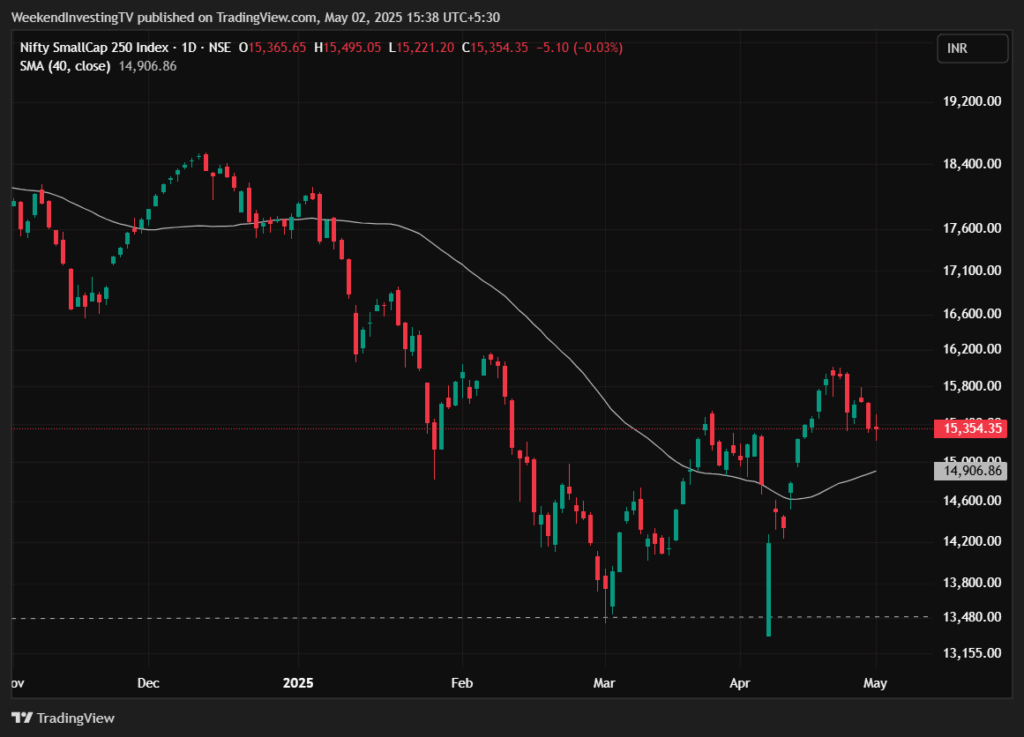
Bank Nifty
Bank Nifty also remained flat. The next trigger for the market remains uncertain—whether it will be an Indo-US trade deal or some sort of geopolitical news, such as a potential attack on Pakistan, is yet to be seen.
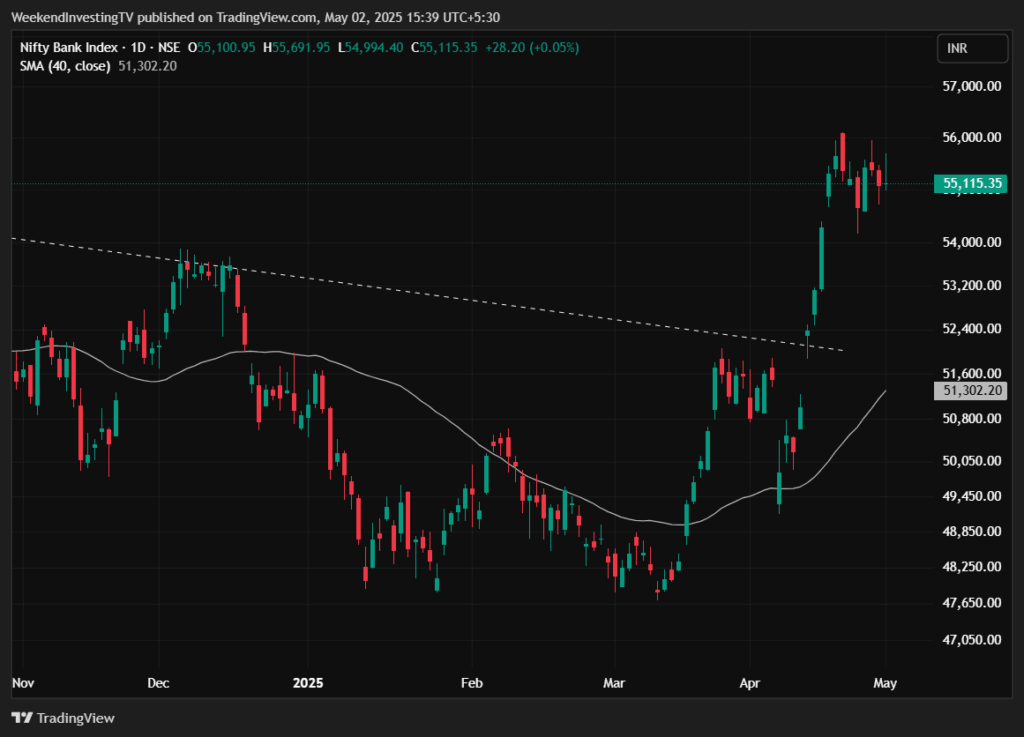
GOLD
Gold has taken support near the 40-day moving average at around 93,800. Our expectation is that it might correct further to around 91,000 at best.
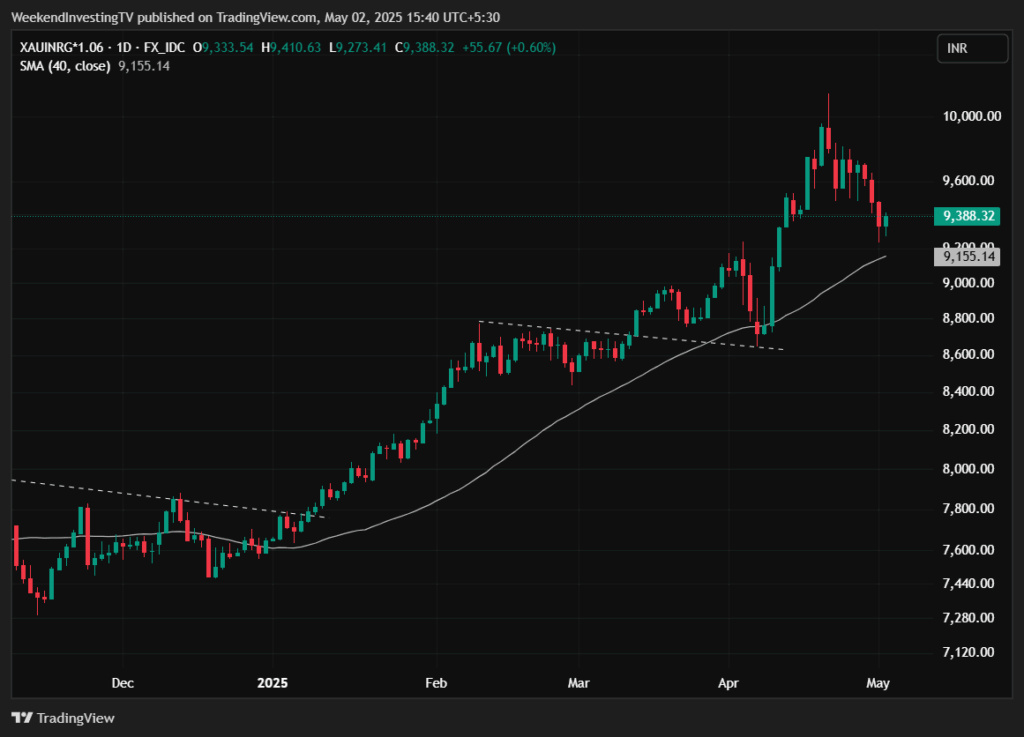
Advance Decline Ratio
Market breadth showed slight improvement from previous sessions, with 214 advancing to 286 declining stocks, but it’s still not where we would like it to be.

Heat Maps
Among today’s gainers were Bajaj Finance, Adani Ports, Reliance, and State Bank of India. Some of the notable losers were Kotak Bank, Parthia, Tel, Bajaj Auto, and Nestle.
In the Next Nifty, deeper cuts were observed in Swiggy, while Zomato’s parent Eternal posted results and the stock went up. FMCG stocks saw some weakness. IOC rose after good results, as did TVS. Indian Hotels and DLF also performed well, making it a mixed day overall.
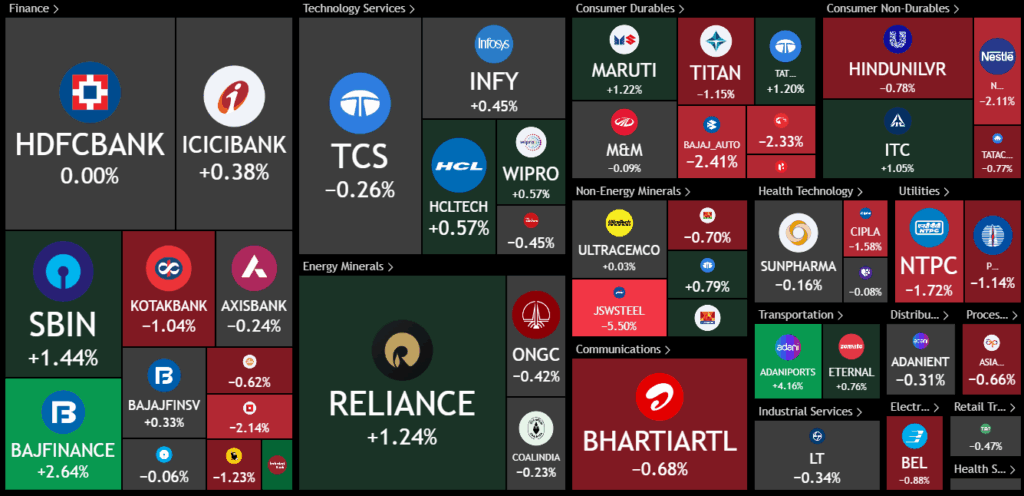
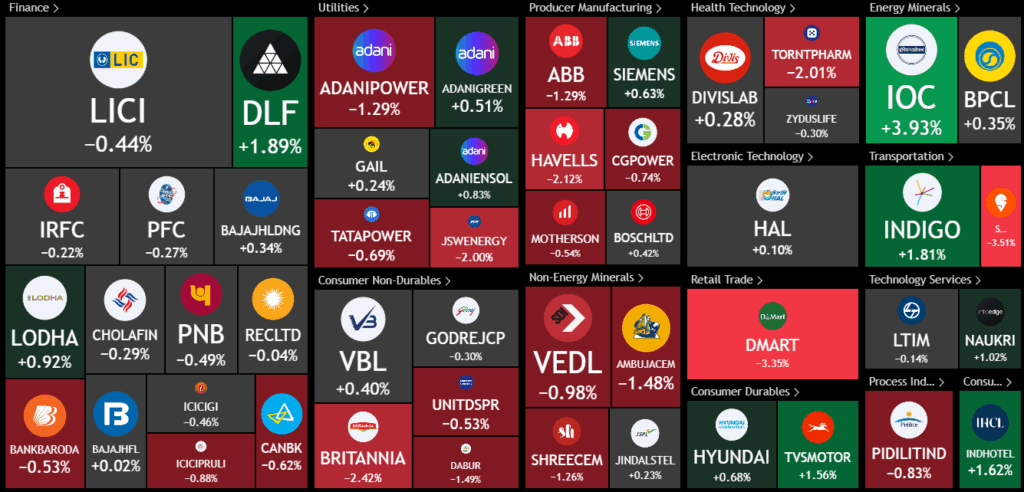
Sectoral Overview
Sectorally, the best performer was oil and gas at +0.7%, while the worst-performing sector was defense, with profit-booking setting in. Central Public Sector Enterprises declined 1%, metals fell 0.7%, and pharma was also down 0.7%. No sector stood out with any significant moves
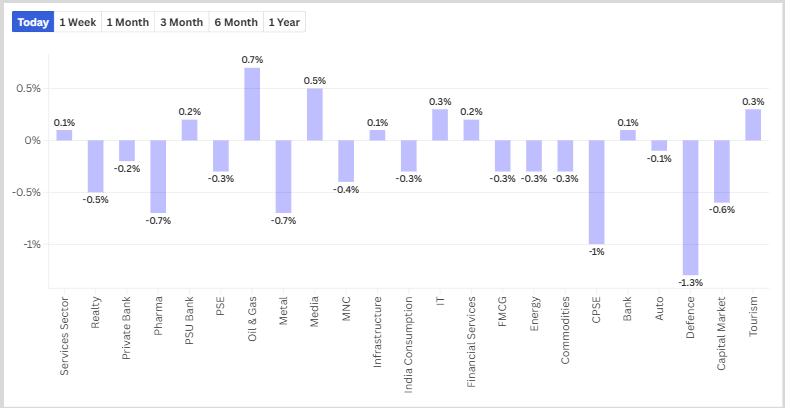
Sectors of the Day
Nifty Oil & Gas Index
Oil and gas found support and is trending upward, even though crude oil is not signaling strong global growth. Crude oil often serves as a leading indicator of global recession, and current prices aren’t offering much confidence. However, positive results from Indian Oil are supporting the sector.
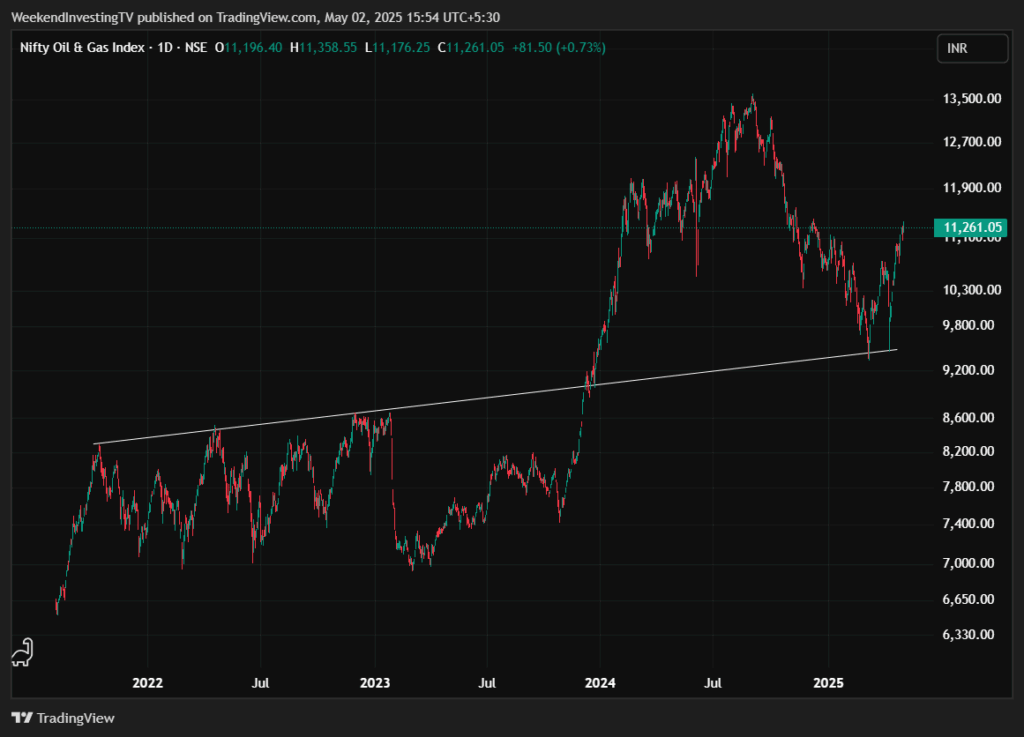
Story of the Day : The Dollar’s Impact on India.
The Trump dollar dilemma is essentially whether a weak dollar is good or bad. Trump has for years pushed for a weaker dollar—both during his first term and now again. The US Dollar Index has dropped about 10%, moving from 110 to below 100, even reaching 98 before retesting that breakdown. If it goes below 98 again, it could result in a very sharp crash, something Trump appears to welcome.
Trump wants a weak dollar, but not a loss of dominance. This is contradictory—he wants the dollar to weaken, but also to maintain its position as the global trade currency. He accuses countries like China of manipulating their currencies to gain unfair trade advantages. In essence, he wants other currencies to strengthen against the dollar, but not at the cost of losing the dollar’s status as the reserve currency.
Let’s take an example: A US manufacturer makes a tractor for $10,000. If the exchange rate is ₹1 = $0.01283, it costs an Indian buyer ₹8.3 lakh—which might be too expensive. But if the rupee strengthens to ₹70 per dollar, the same tractor would cost ₹7 lakh, making it more affordable and increasing demand. Stronger rupee leads to larger import orders, boosting US production and jobs, and helping the US trade deficit.
On the flip side, a weaker dollar makes US imports more expensive. For example, an iPhone made in China costing $1,000 might now cost $1,050 in the US. The cost is passed on to US consumers, especially in import-heavy sectors like electronics and pharma, leading to inflation and reduced consumer spending.
So there’s a contradiction: The US wants higher tariffs and a weaker dollar while maintaining the dollar as the world’s reserve currency. Normally in turbulent times, the dollar strengthens as a safe haven. But after the April tariff announcement, the dollar continued to weaken, and US bonds crashed, causing yields to rise.
This is different from past trends. Previously, when equities fell, investors moved money into US Treasury bonds, lowering yields. This time, investors avoided both US equities and bonds, seeking other safe havens. This has led to a double panic in the US, pushing the White House to ease off on its tariff rhetoric.
Foreign investors now fear a prolonged trade war. With Trump potentially in office for another four years, US exceptionalism is starting to unwind. The latest US quarter posted negative growth after nearly a decade of positive quarters. This has triggered aggressive foreign bond selling, with Japan warning of selling off US Treasuries. Rising bond yields in a heavily indebted world like the US is extremely dangerous.
The longstanding safe-haven trust in US bonds is breaking down. Countries and central banks that previously poured money into US Treasuries are now becoming cautious. They fear volatility from the US administration and are starting to look elsewhere. The 90-day pause in tariffs appears to be a move to calm down revolting markets.
The US dollar’s power stems from debt. The US runs a trade deficit and sends dollars out to buy goods and services, which foreign countries used to reinvest into US debt. This cycle is now breaking. Foreign countries are no longer reinvesting into US assets. Instead, dollars are moving into other currencies, gold, or non-US bonds.
Major holders of US Treasuries like Japan, China, and the UK are not increasing their holdings anymore. Instead, they are letting those holdings roll off gradually. The confidence crisis in the dollar is real, and Trump’s erratic policies have exposed the system’s fragility.
So how can India benefit from a weakening dollar? With global investors moving beyond the US, India becomes a prime candidate for capital inflows due to its relatively steady growth. The key question is whether India can absorb massive capital inflows—for example, what if instead of ₹30,000 crores, ₹300,000 crores flow in? Our markets lack the depth and liquidity to handle such volume easily.
FII activity has been positive for 15 consecutive sessions. India is well-positioned to receive a fair share of global capital reallocations, and this is likely to be a tailwind for Indian equities.
The Indian rupee, however, presents a dilemma. A stronger rupee improves import affordability (especially for oil and gold) but hurts export competitiveness. Since exports aren’t a dominant part of India’s GDP, this is a tricky balance. A stronger rupee may trigger pressure from exporters on the government to intervene. But if the US pushes for a weaker dollar, India may have limited room to act without being accused of currency manipulation.
Historically, Indian markets have done well during periods of dollar weakness. Between 1985-92 and 2002-08, the Dollar Index fell and Indian markets performed strongly. Now the big question is whether this is the start of a similar long-term trend.
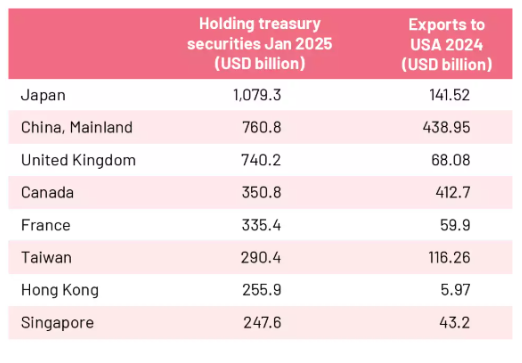
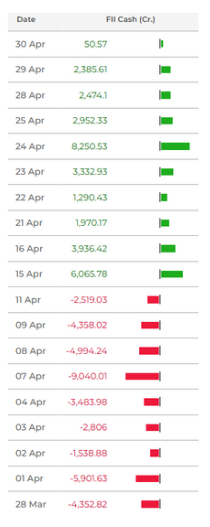
WeekendInvesting launches – The Momentum Podcast
In this episode of the Momentum Podcast by Weekend Investing, we sit down with Sudheer , a software engineer from Infosys who shares his honest and inspiring investing journey—from early losses in derivatives and scams to his turnaround using Weekend Investing’s smallcases.
💡 Hear how Sudheer allocates ₹30,000/month, balances risk with gold, navigates market dips confidently, and the crucial mindset shift he learned through momentum investing.
👉 Don’t miss Sudheer’s powerful advice for new investors and the importance of discipline and long-term thinking.
Fill in the form below to be part of this exciting series : https://forms.gle/HDbEk9xrTjVecW2c9
Disclaimers and disclosures : https://tinyurl.com/2763eyaz

